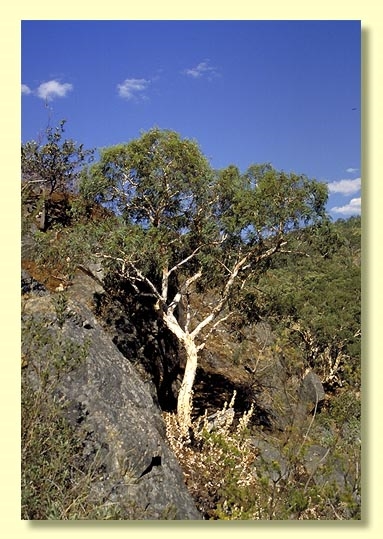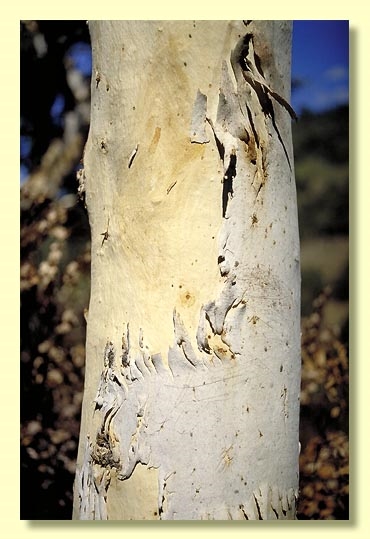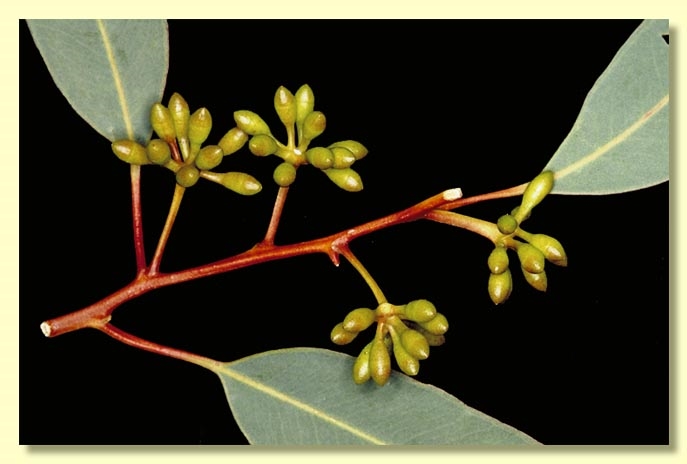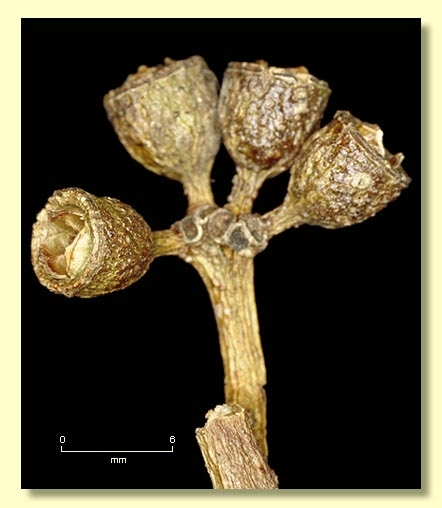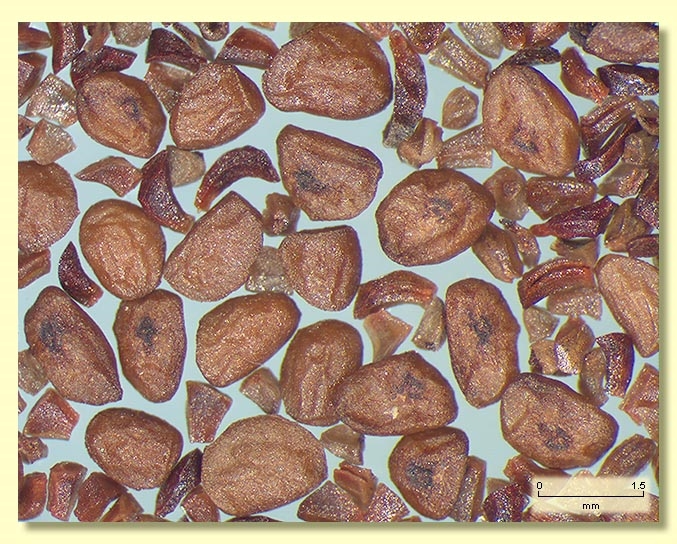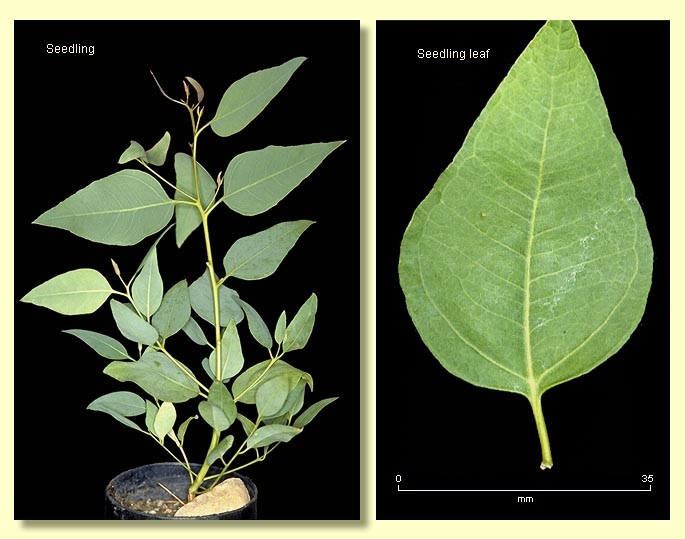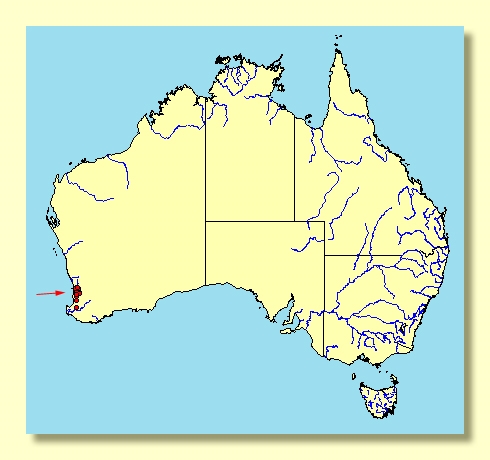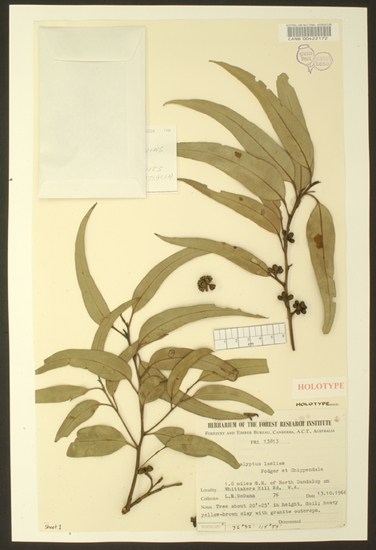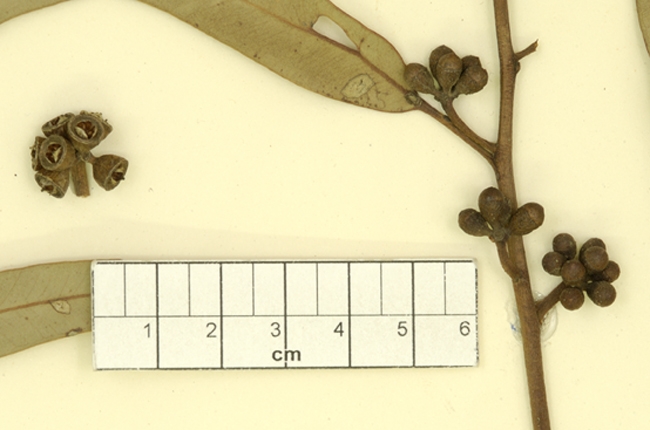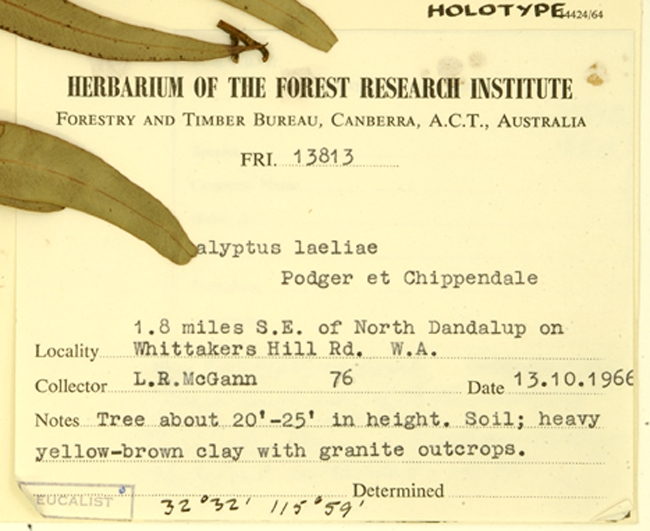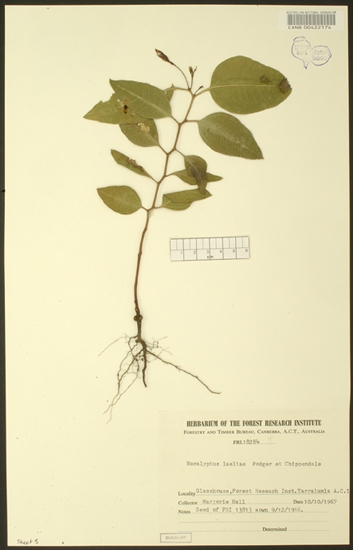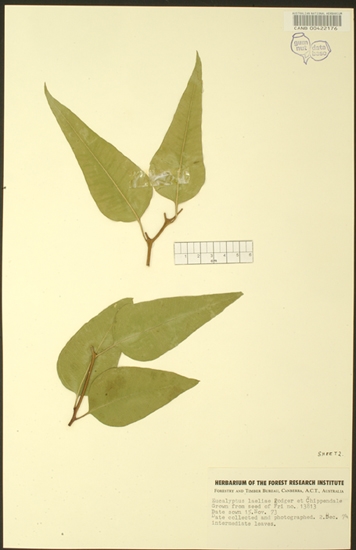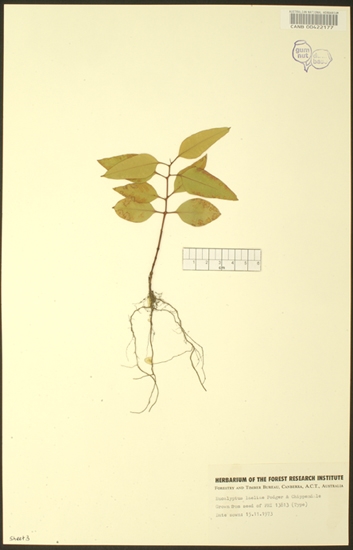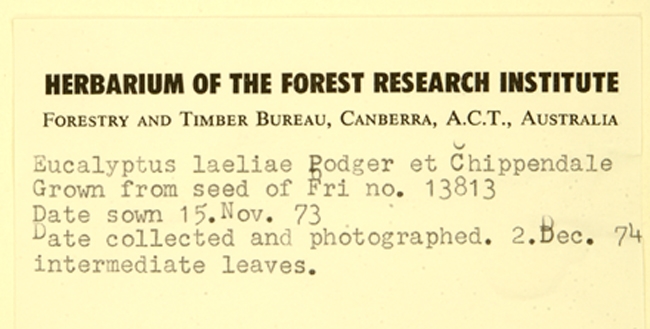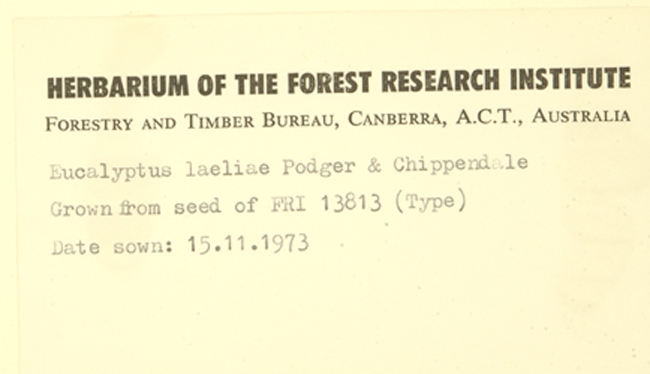Euclid - Online edition
Eucalyptus laeliae
Eucalyptus | Symphyomyrtus | Bisectae | Glandulosae | Accedentes
Bark smooth white becoming yellow in spring, powdery.
Branchlets with oil glands in pith.
Juvenile growth (coppice or field seedlings to 50 cm):stems rounded in cross-section; juvenile leaves alternate, petiolate, ovate to lanceolate, 6.5–12.5 cm long, 2.3–4.5 cm wide, base usually tapering to petiole, margin entire, apex pointed, blue-green (not glaucous).
Adult leaves alternate, petioles 0.8–2 cm long; blade narrowly lanceolate to lanceolate, 8.5–13.5 cm long, 1–2.5 cm wide, base tapering to petiole, margin entire, apex pointed, concolorous, dull, blue-green to yellow-green, side-veins greater than 45° to midrib, densely reticulate, intramarginal vein close to margin, oil glands mostly intersectional.
Inflorescence axillary, single, peduncles erect, 0.8–1.5 cm; buds 7, 9 or 11 per umbel, pedicellate (pedicels 0.2–0.3 cm long). Mature buds obovoid (0.6–0.7 cm long, 0.3–0.5 cm wide), scar present, operculum usually rounded and apiculate, stamens mostly inflexed but a few irregularly flexed in many buds, anthers oblong, versatile, dorsifixed, dehiscing by longitudinal slits, style straight, long, stigma blunt, locules 3(4), the placentae each with 4 vertical ovule rows. Flowers creamy white.
Fruit pedicellate (pedicels 0.1–0.5 cm long), cupular to barrel shaped, 0.5–0.7 cm long, 0.4–0.6 cm wide, disc descending, valves 3(4), near rim level.
Seeds mid-brown, 1–2 mm long, ovoid or slightly flattened, dorsal surface closely and shallowly reticulate or scarcely so, hilum ventral.
Cultivated seedlings (measured at node 10): cotyledons Y-shaped (bisected); stems square in cross-section; leaves always petiolate, opposite for 3 to 5 nodes then alternate, ovate, 4–8 cm long, 2.5–4 cm wide, dull, yellowish-green.
Flowering has been recorded in January.
A small to medium-sized tree endemic to Western Australia, restricted to the western scarp of the Darling Range east and south-east of Perth, from Helena Valley to Serpentine. The bark is smooth, yellow or white and powdery. The adult leaves are dull green.
Eucalyptus laeliae belongs to Eucalyptus subgenus Symphyomyrtus section Bisectae subsection Glandulosae because the cotyledons are bisected, buds have an operculum scar and the branchlets have oil glands in the pith. Within this subsection E. laeliae belongs to a small subgroup of eight species, series Accedentes, further characterised by having buds with inflexed stamens, ovules in four rows and juvenile leaves petiolate. The species are E. accedens, E. laeliae, E. leprophloia, E. trivalva, E. pruiniramis, E. zopherophloia, E. prominens and E. pilbarensis.
E. laeliae was long confused with E. accedens and occurs within its distribution. E. accedens differs by the orange bark in season, the large deltoid juvenile leaves and the larger buds and fruit. The other white-barked tree of the Darling Range is E. wandoo, which belongs to another series and is easily distinguished by the small elongated fusiform buds with many erect stamens in bud, compared with the completely inflexed stamens in E. laeliae and E. accedens.

